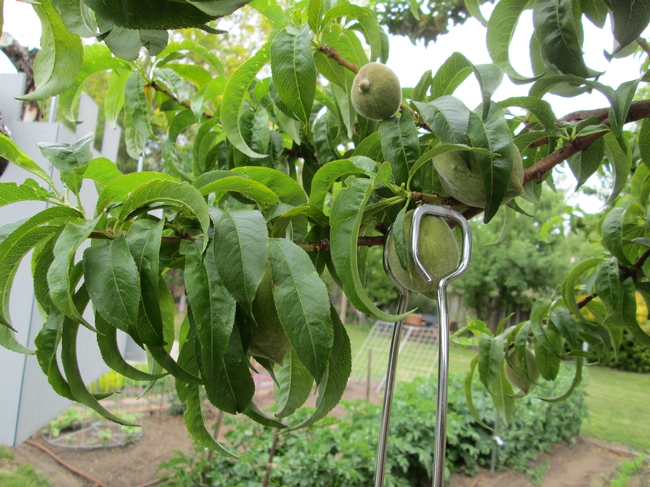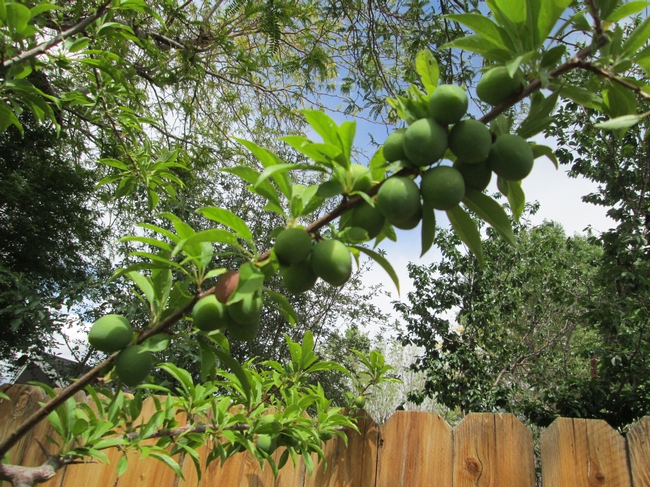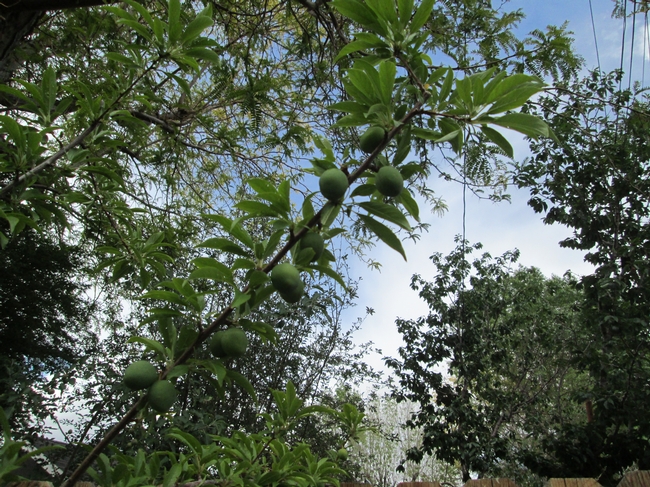Optimum growing and pollinating conditions lead fruit trees such as apples, peaches and plums to set far more fruit than the tree can sustain to maturity. If all these fruits are left on the tree they will be small and of poor quality and the total weight of such a load on the branches will cause them to break off or split at the crotch, often causing severe damage to the tree. Crowded fruits also encourage pests such as codling moths and diseases such as brown rot and scab. Over-cropping prevents the tree from putting energy into producing flower buds for the following year which will be detrimental to that crop. Apple varieties with biennial patterns of production - those with cycles that produce a bumper crop one year and nothing the next - may be induced to fruit annually by drastically thinning early during the productive year, even to the point of removing all flowers from alternate spurs.
Many trees shed part of their crop naturally, a process known as “the June Drop” but which can begin during May in California. However, this is often not sufficient to produce quality fruit at harvest.
One of the most psychologically challenging tasks that a gardener faces is removing perfectly healthy fruit (sometimes by the bucketful) in order to leave more manageable numbers. The earlier in the season that the surplus fruits are removed, the larger the individual remaining fruits will become. It takes some seasons of experience to judge how many fruits to remove but a steely resolve will be amply rewarded. The largest fruit in any cluster is usually left, unless it is obviously damaged.
Apples: These should be thinned to one or two fruits per cluster depending on variety and the overall set of flowers. One fruit per spur 6-8 inches apart is the aim but, if the overall crop is light, clusters of two may be left. Realistically the fruit often grows in frustrating patterns with groups of 5 beautiful apples on one spur and then several spurs with no really good fruits forcing a decision as to whether or not to leave two fruits on the good spur! Fruitlets are removed using scissors or other fine cutters which can reach inside the cluster to the stem. These can be cut close to the fruit and the little stem may be left without any detrimental effect. It is vital not to just pull on the fruit since this will often drag the whole spur off the branch. Some gardeners grasp the stem of the fruit between their first two fingers and “roll” the fruit off with their thumb. There are usually a variety of sizes and shapes in each cluster so begin by removing the small, damaged and misshapen ones first. Then there is the agonizing decision of which of the remaining two perfect fruit to leave. I find that usually one has a slightly thicker stem than its partner so I would leave that. In order to get the best sized fruit at harvest the ideal leaf to fruit ratio for apples would be around 75:1 for early varieties down to 40:1 for the later ones, but who's counting!

Peaches: The same basic principles apply but a little more space is usually left between fruit – about 6- 9 inches. However they grow much tighter to the stem and are best removed by grasping the fruit firmly and twisting it round until it detaches. For those just out of reach, I have found that barbecue tongs (the sort with a looped end) make an efficient removal tool.
Plums: Thin to about 3-4 inches apart. Overloaded plums will naturally drop fruit at the stone hardening stage, so sometimes growers thin in two stages; lightly when the fruits are small, and then finally once the natural dropping has ceased.
Cherries and Nuts are not usually thinned.
Pears: Often thin themselves, but if extra thinning is needed in order to end up with one pear per spur, the time to do this is when the fruitlets begin to turn downwards.
Thinning is undoubtedly a rather tedious business, but when harvest time comes and the fruits are large, lush and healthy, you will be so pleased that you made the effort.

